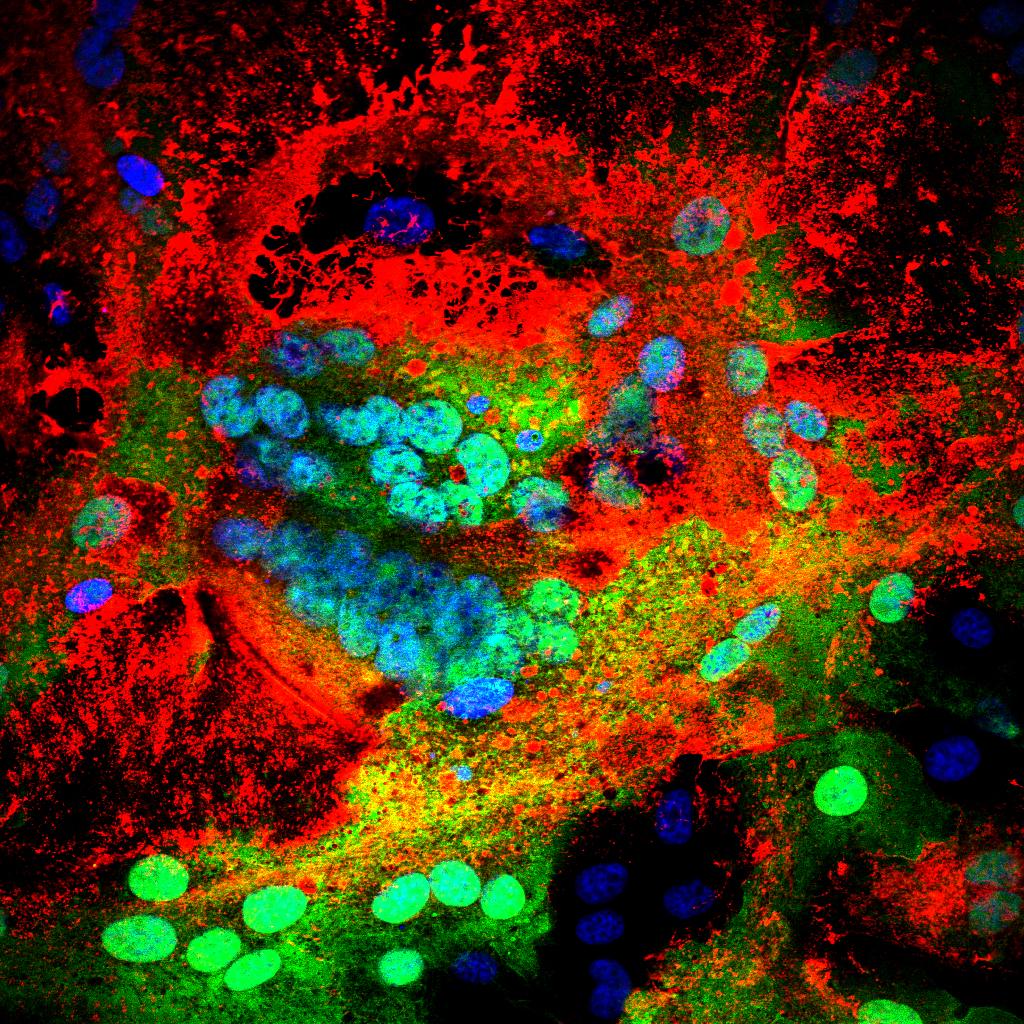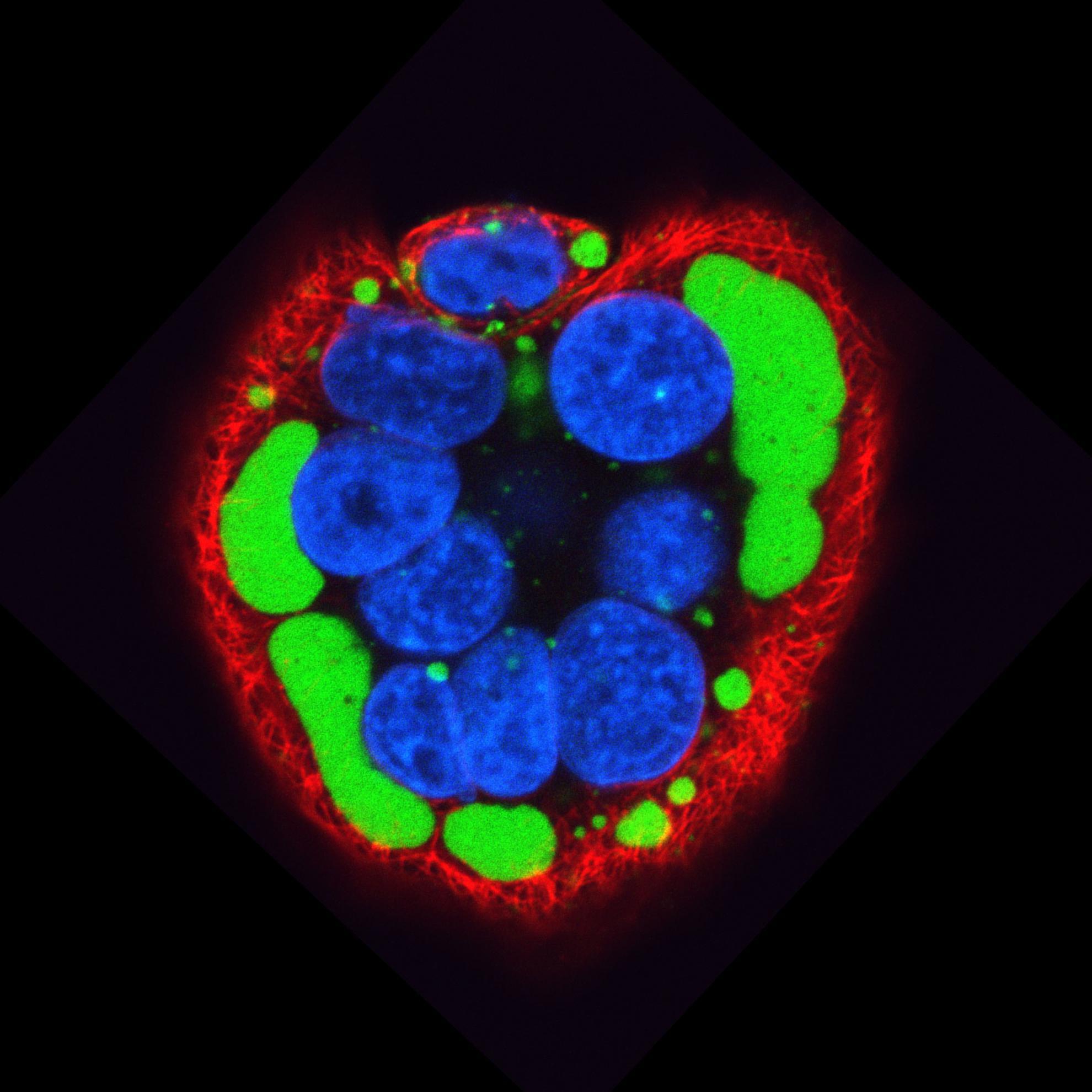Rescue of a chimeric rinderpest virus with the nucleocapsid protein derived from peste-des-petits-ruminants virus: use as a marker vaccine
The nucleocapsid (N) protein of all morbilliviruses has a highly conserved central region that is thought to interact with and encapsidate the viral RNA. The C-terminal third of the N protein is highly variable among morbilliviruses and is thought to be located on the outer surface and to be available to interact with other viral proteins such as the phosphoprotein, the polymerase protein and the matrix protein. Using reverse genetics, a chimeric rinderpest virus (RPV)/peste-des-petits-ruminants virus (PPRV) was rescued in which the RPV N gene open reading frame had been replaced with that of PPRV (RPVPPRN). The chimeric virus maintained efficient replication in cell culture. Cattle vaccinated with this chimeric vaccine showed no adverse reaction and were protected from subsequent challenge with wild-type RPV, indicating it to be a safe and efficacious vaccine. The carboxyl-terminal variable region of the rinderpest N protein was cloned and expressed in Escherichia coli. The expressed protein was used to develop an indirect ELISA that could clearly differentiate between RPV- and PPRV-infected animals. The possibility of using this virus as a marker vaccine in association with a new diagnostic ELISA in the rinderpest eradication programme is discussed.
Back to publications

